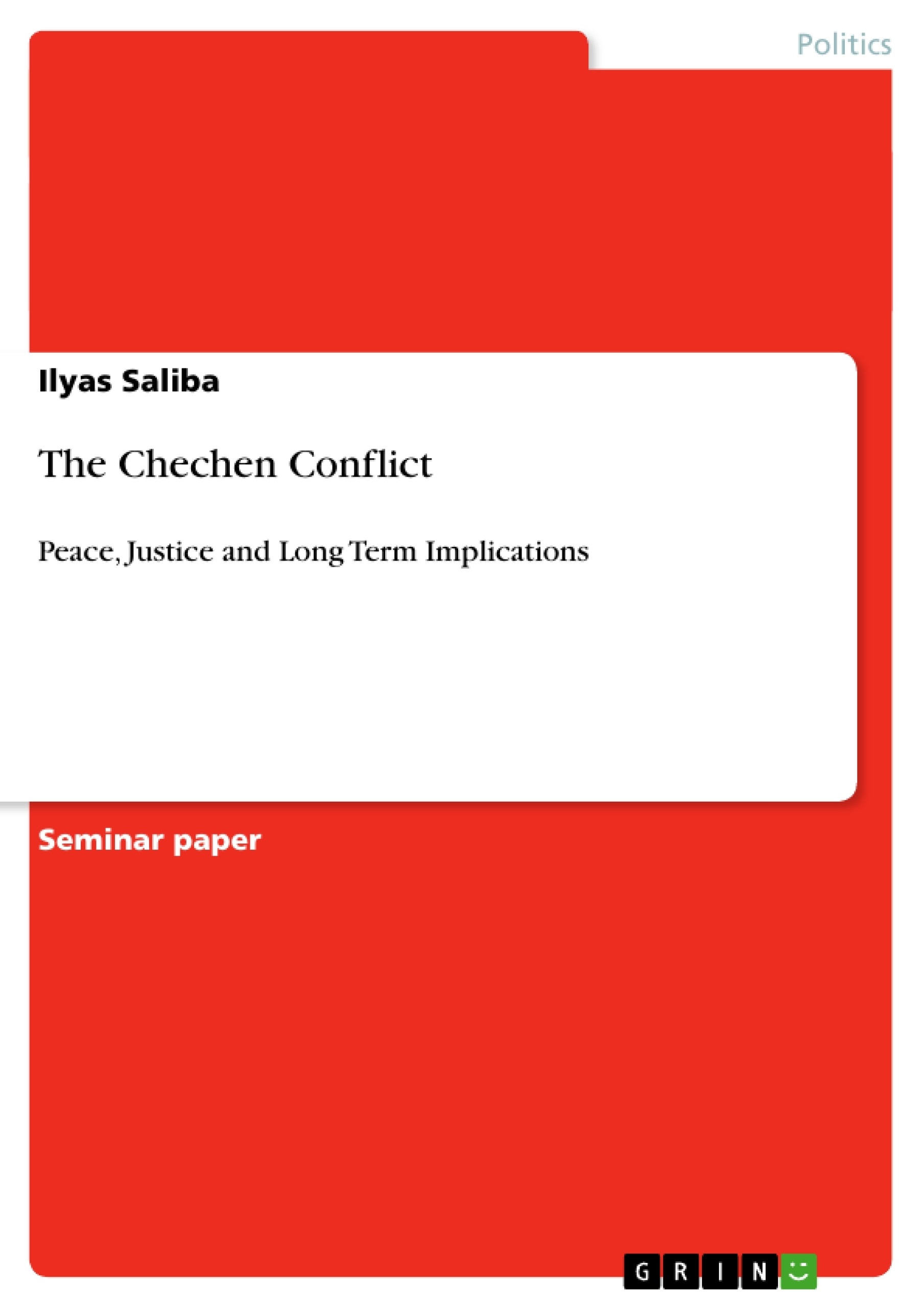In the opening part of this paper I will firstly discuss the concepts of peace and justice and the tension between them, theoretically through referring to the relevant literature. Secondly I will reflect on the role of interests from actors and their different definitions of peace. Thirdly I will explain what kind of implications this inherits for long-term peacebuilding. In the fourth part I will enrich the discussion through highlighting one example on the basis of my case study of the Chechen conflict.
The concepts of peace and justice are inseparably connected with each other in modern long-term peacebuilding. But why is this so? I will try to explain this through referring to the development of the concept of peace within the field of conflict resolution. Everything started with a very simple, though obvious and evident definition of peace. Fernando labels this the „traditional view which argued that peace is the absence of war.“ (Fernando 2000: 1). One terminological criticism is that the word „war“ as a extreme and specific type of violence does not take other forms of violence, like for example structural violence, into account. Although, as research shows, the victims of structural violence at least quantitatively are a lot higher, than those who suffer from direct violence as for example war. Therefore Galtung already in the late 1960s introduced the concept of a broader understanding of peace as the absence not only of war but „the terms 'peace' and 'violence' be linked to each other such that 'peace' can be regarded as 'absence of violence'“ (Galtung 1969: 168).
Inhaltsverzeichnis (Table of Contents)
- Peace, Justice and Long-Term Implications
- The Concepts of Peace and Justice
- Different Ideas of Peace and Justice
- Implications for Long-Term Peacebuilding
- Challenges for Sustainable Peacebuilding
- Challenges within the Literature
- Challenges Concerning the Chechen Conflict
Zielsetzung und Themenschwerpunkte (Objectives and Key Themes)
The paper explores the concepts of peace and justice in the context of long-term peacebuilding, analyzing their interplay and the challenges they present. The paper examines how these concepts are understood by different actors in a conflict, focusing on the Chechen conflict as a case study.- The tension between peace and justice in conflict resolution.
- The importance of understanding different conceptions of peace and justice by key actors.
- The challenges of long-term peacebuilding, including the need for multi-layered approaches.
- The role of transformation theories in sustainable peacebuilding.
- The Chechen conflict as a case study of divergent understandings of peace and justice.
Zusammenfassung der Kapitel (Chapter Summaries)
- The paper begins by examining the concepts of peace and justice, tracing their development from a traditional, narrow understanding of peace as the absence of war, to a broader, holistic understanding that encompasses the absence of violence and injustice. The author highlights the potential for conflict between these concepts, drawing on examples such as the dilemma of holding perpetrators of war crimes accountable while maintaining stability. The role of interests in shaping different understandings of peace and justice among actors is also explored.
- The paper then moves on to discuss the implications of these differing conceptions for long-term peacebuilding. The author emphasizes the need for multi-layered approaches to peacebuilding, involving various actors at different levels of society. The importance of transforming the means and instruments of conflict resolution, moving away from violence, is also highlighted.
- The author then presents the Chechen conflict as a case study, examining the divergent understandings of peace and justice held by the Russian government and the Chechen separatist movements. This case study illustrates the challenges of achieving a sustainable solution to a conflict where key actors have fundamentally different ideas about what constitutes peace and justice.
Schlüsselwörter (Keywords)
The paper focuses on the concepts of peace and justice, conflict resolution, long-term peacebuilding, transformation theories, and the Chechen conflict. Key themes include the tension between peace and justice, the role of different actors and their interests in shaping understandings of peace and justice, and the challenges of achieving sustainable peace.- Citar trabajo
- Ilyas Saliba (Autor), 2009, The Chechen Conflict, Múnich, GRIN Verlag, https://www.grin.com/document/139224



